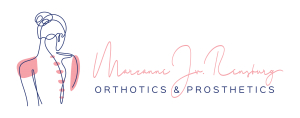
WHAT IS OEDEMA?
Oedema develops when fluid accumulates in the tissues. Swelling can be seen and felt.
Oedema can either affect the whole body or it can occur at a specific area. The word oedema is used to describe a symptom, it is not a diagnosis.
There are numerous forms of oedema, lymphedema, lipoedema and phleboedema are most important for compression therapy.
What is Lymphedema?
It is a disruption in the normal flow of lymph fluid resulting in an excess accumulation of interstitial fluid and proteins causing the swelling in the body.
Signs of Lymphoedema
- Gradual swelling of a limb, rarely of several limbs
- A feeling of heaviness at the affected site
- Positive stemmer sign- This means that the skin of the second toe or finger cannot be raised between two fingers.
- Initially the skin pits when pressed with a finger at the affected site.
- The natural skin folds around the joints become much deeper
- At a later stage, hardening occur at the affected site.
There are two types of Lymphedema
Primary lymphedema that happens at birth and secondary lymphedema that results from various conditions like; removal of lymph nodes in cancer surgery, burns, lipoedema, complicated bone fractures, radiotherapy, damage to the lymphatic system in surgery, injuries and infections with bacteria, fungi or tropical nematodes.
Can it be treated?
Lymphedema can be treated with Manual lymph drainage with Compression bandages or compression wraps and graduated compression garments.
Depending on the classification stage of the condition a treatment plan will be determined.
What is Manual Lymph Drainage?
Manual lymph drainage creates a vacuum to facilitate lymph flow by clearing proximal pathway draws proteins and will cause you to urinate more.
Compression Therapy
Compression garments assist the body to move lymph fluid out of the interstitial spaces of the affected tissues and return to the lymph vessels, for recirculation back to the heart. This is accomplished with the compression garment that applies pressure to the affected tissues, putting pressure on the lymph fluid and facilitating its return to the vessels for removal.
To facilitate lymph drainage the graduated compression applies compression that is tightest at the ankle or the wrist that is the furthest from the heart and applies less tight compression to the area that is closer to the heart. The external compression applied by the garment is a key component to the plan helping to control the pain, swelling and discomfort that may accompany lymphedema.
Types of Compression Garments
Flatknit Compression Garment
Made to measure flat knit compression garments are now the “gold standard” in lymphological therapy and must be correctly fitted by a specialist.
Flatknit compression garment is knitted in a flat row, has a seam and has variable number of stitches. It has a low stretch and high working pressure. Compared to a round knit garment, it is a stiffer and thicker fabric. The primary effect is to increase tissue pressure and secondary effect is on the vessels. This type of garments is available in arm sleeves, gloves, stockings, and pantyhose. They are normally made to measure to best serve your needs.
Round knit compression Garment
This is a seamless compression garment that comes in several of the shelf sizes. It is knitted on a circular cylinder and has a low working pressure. It is more used in venous insufficiency and it effects the vessels. It is a soft, smooth and stretchy fabric that sounds appealing, but the fabric lacks stiffness and rest in creases of the skin. In severe lymphedema cases this can hinder lymph drainage. This type of compression garment is available in arm sleeves, gloves, stockings and pantyhose and are normally off the shelf but can be made to measure as well.
Medical compression garments are used as disease-modifying treatment of impaired venous function. The doctor/Therapist chooses the correct garment for the patient on the basis of the clinical picture. The length (knee socks, thigh-length stockings or pantyhose) is just as important as the compression class.- (Mediven:2020)
Venous Ulcer compression system
Treatment for venous leg ulcers demands a cleverly thought out treatment concept. Your venous leg ulcer can be treated with the mediven ulcer kit. The ulcer kit consists of two stockings that are worn over each other: mediven ulcer and mediven ulcer plus. The incorporation of elemental silver promotes wound healing and has an antibacterial effect. – (Mediven:2020)
The travel stockings
The high cotton content of this support stocking makes it especially soft and comfortable to wear. These stockings provides noticeable relief, activates the leg muscles and, thanks to the mild compressive effect, promotes venous function. This makes it the ideal companion during work, leisure, travel and sport – both for women and men. (Juzo:2020)
Features
- High cotton content, extremely skin-friendly
- Perfect fit
- Shapes the silhouette of the legs
- Seamless with closed toes
Perfect for travel and sport
Nighttime garments
The goal of a nighttime garment is the same as an armsleeve or stocking that you where during the day and that is to keep the lymph fluid flowing back to the heart and it help to reduce and control the swelling. Night garments have a lower compression level, it contains foam technology that breaks down tissue fibrosis and improves micro- circulation and it is made from a softer material that increases comfort and make it easier to wear.
